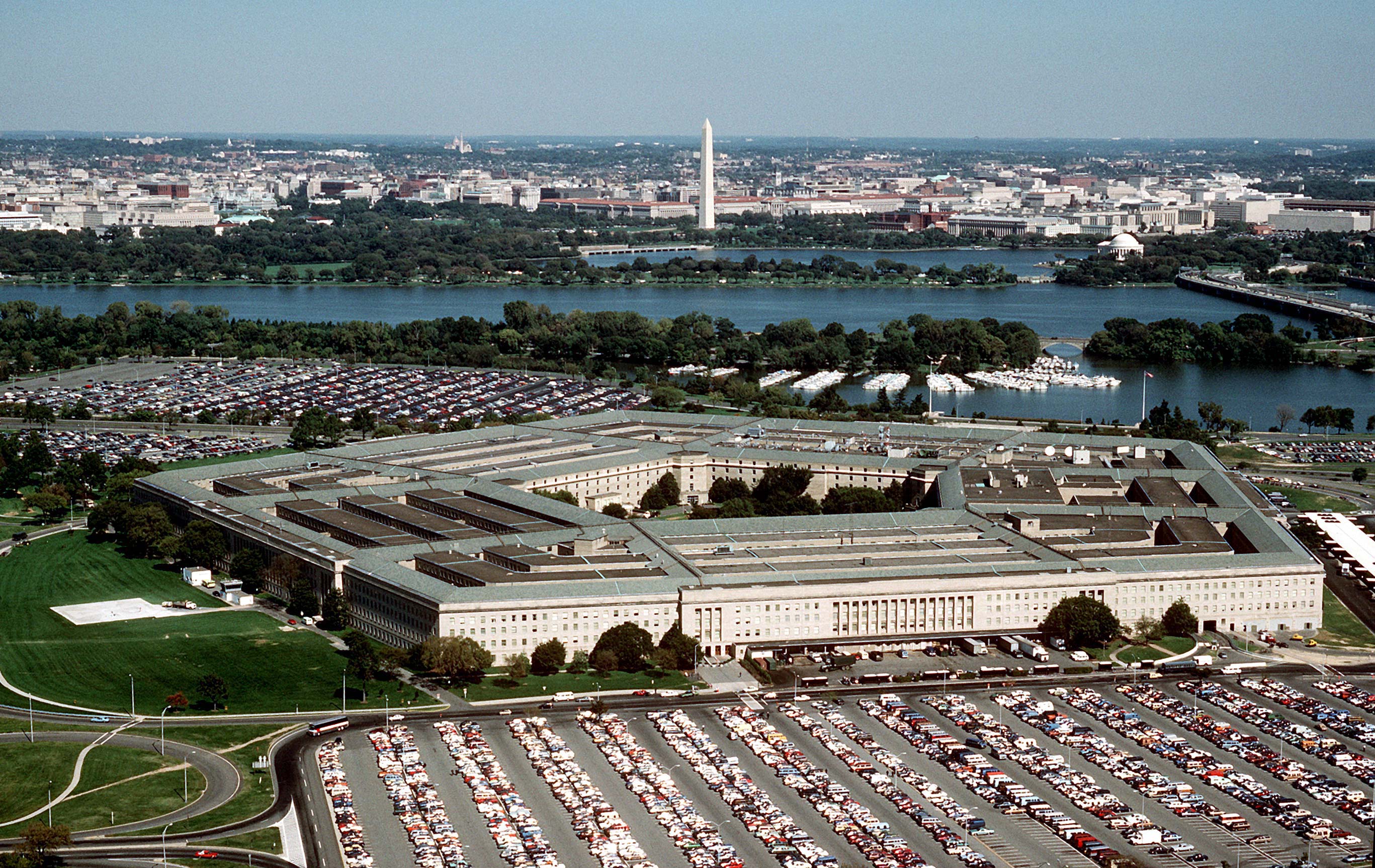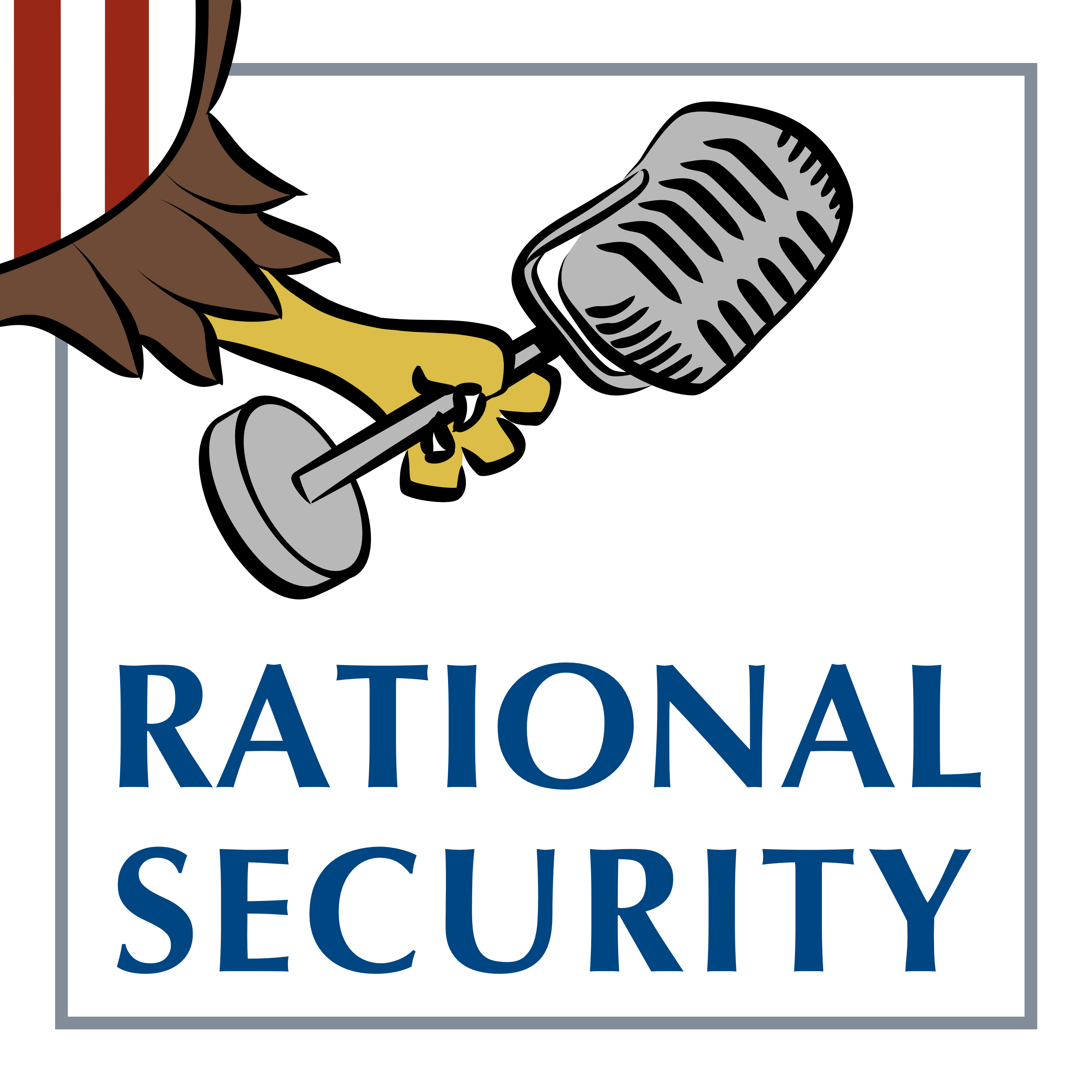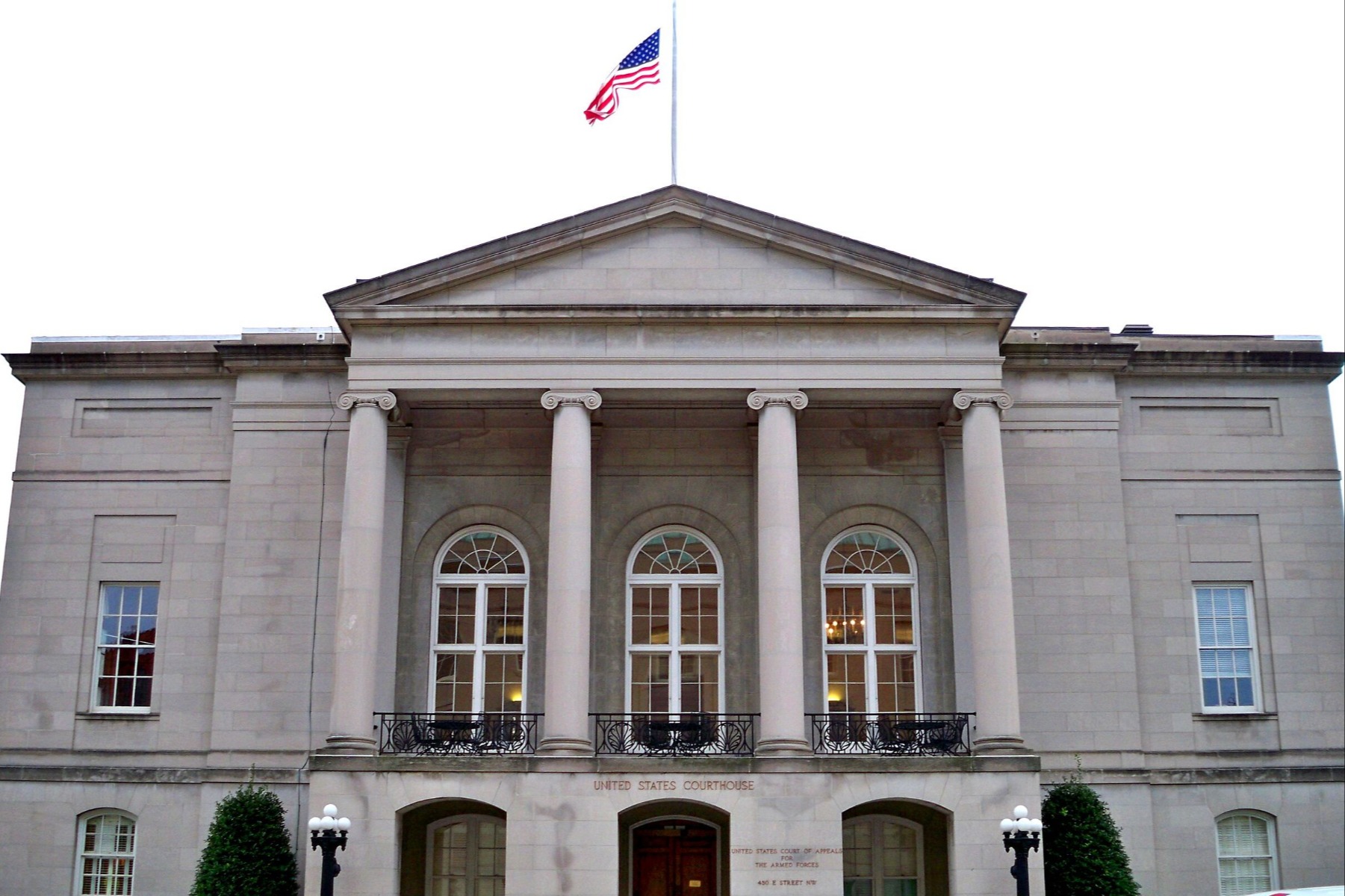The Commander in Chief in Congress
A review of Casey Dominguez, “Commander in Chief: Partisanship, Nationalism, and the Reconstruction of Congressional War Powers” (University Press of Kansas, 2024).

Published by The Lawfare Institute
in Cooperation With

The Commander in Chief Clause, in Article II, Section 2, reads: “The President shall be Commander in Chief of the Army and Navy of the United States, and of the Militia of the several States, when called into the actual Service of the United States.” This clause—especially the meaning of “Commander in Chief”—is notoriously opaque. And as Judge David Barron has noted, the records of deliberations at the Constitutional Convention related to “what kind of wartime leader the delegates” preferred are “not much more help.”
In “Commander in Chief: Partisanship, Nationalism, and the Reconstruction of Congressional War Powers,” political scientist Casey Dominguez seeks to clarify the meaning of this constitutional provision by examining every reference to the clause in congressional debate from the founding to World War I. She argues that these congressional statements suggest that members of Congress conceived of the president’s commander in chief authority narrowly from the founding until the end of the 19th century, when Congress began to defer more broadly to the president under the clause.
The book fits into the emerging literature on “historical gloss” in foreign affairs, which looks to governmental practice to understand the meaning of the Constitution. Dominguez sheds some light on congressional sentiment underlying its actions related to the Commander in Chief Clause. But the book’s value is limited by Dominguez’s elevation of congressional statements above the actions that Congress took as keys to discerning Congress’s constitutional views and, more important, by her reliance on inadequate evidence to support her characterizations of Congress’s understanding of the commander in chief power.
The Argument
Dominguez contends that from the time of the founding until the end of the 19th century, Congress viewed the commander in chief as a “general” who had some “battlefield” discretion but could not make “deliberative decisions about war and peace.” Within this broader “script,” Dominguez identifies two subscripts—one in which Congress could give “direct orders” to the president related to military activities, and the other that conceived of the president as “a general” who was “supreme on the battlefield, taking no direction from uninformed legislators.”
These limiting views of the president’s military authority gave way, according to Dominguez, near the end of the 19th century, when “members of Congress began to conflate the commander in chief with the military, the flag, and the nation itself.” In this new “script,” Congress had a “duty to defer to the president” and to cede “congressional supremacy in decisions regarding the use of force.” She also claims that Congress attributed more authority to the president when members believed that public opinion was on his side. (Dominguez did not invent the concept of scripts; she applied them to the Commander in Chief Clause.)
These scripts, according to Dominguez, “supply an accessible and easily understandable description of constitutional authority, draw attention to relevant precedents, and allow members to reason from outside their current political situation.” To conduct this script-based constitutional reasoning, members in the 19th century “relied on simple stories that synthesized constitutional text and familiar historical examples,” with some reference to well-known books. For example, Dominguez states that members frequently cited the Militia Act of 1795 in support of congressional supremacy and delegated presidential discretion in repelling invasions, protecting the border, and subduing domestic unrest.
Dominguez argues that in the 20th century, members justified broader deference to the president under the clause using nationalistic and patriotic rhetoric. For instance, in the aftermath of the Spanish-American War, one Republican member said amid questions about U.S. activities in the Philippines and Puerto Rico, “[I]n my humble judgment it ought not to be discussed. When the earth is drinking the warm blood of American heroes … that which is fit to be done, is to stand by the flag of our country and by the Commander in Chief of the American Army—our President.” These conceptual scripts and the bodies of evidence members used to support them point to particular forms of war powers reasoning that are worth tracking to understand the logic underlying congressional war powers activity.
The Problems
Dominguez claims to “identify a ‘congressional interpretation’ of the commander in chief clause” based on the statements addressing the clause by members of Congress from the founding to World War I. As discussed below, to identify an actor’s interpretation of a constitutional provision, one should start with the actor’s action and turn to statements to fill in gaps when actions offer insufficient evidence.
Dominguez instead focuses primarily on statements to identify Congress’s views of the commander in chief power. When members’ actions seem to run against their words, Dominguez looks to the words to identify the members’ interpretation of the Constitution and contends that their contradictory actions flow from considerations competing with their constitutional views, rather than acknowledging that the actions may reflect their constitutional views despite contradictory rhetoric. This direct conflict between words and actions is notable in Dominguez’s theory, but such conflicts appear rarely in her analysis. More often, and more concerning, is Dominguez’s description of a particular constitutional view with very limited evidence of congressional statements in support of that view. It is precarious to draw meaning from just a few congressional statements—especially when related action does not clearly reflect a particular constitutional view.
Good and Bad Historical Gloss
Engaging in “gloss”-based constitutional analysis means “giv[ing] weight to post-Founding governmental practice” to discern constitutional meaning. As Curtis Bradley writes in the most prominent book on gloss and foreign relations law, “The arguments for relying on historical gloss are especially strong in the area of separation of powers.” Interpreters most often invoke gloss “to resolve ambiguities and omissions in the text [of the Constitution].” Therefore, gloss is most useful when the text is unclear—such as in the Commander in Chief Clause.
Bradley describes three “general requirements” for crediting historical gloss: “(1) governmental practice (2) that is longstanding and (3) concerning which the affected branch of government has acquiesced.” Gloss, he explains,
is focused on governmental practice—that is, the actions and inactions of government institutions. … more weight is generally placed on the actual behavior of institutions than on their stated views, for the obvious reason that talk can be cheap in politics. Nonetheless, governmental statements and reasoning are still relevant because, among other things, they can provide insights into how participants in a practice understand the practice and its scope.
Dominguez’s collection of congressional references to the Commander in Chief Clause are the kind of “governmental statements and reasoning” Bradley mentions. They can be quite helpful in filling in the history when concrete action leaves open questions. Dominguez’s stated aim in the book is promising toward this end. She seeks to (a) “share details from some of the rich constitutional debates about the commander in chief clause in the nineteenth and early twentieth centuries, without overwhelming the reader” and (b) “organize those speeches and debates to highlight the themes that emerged as [she] analyzed them.” However, as Bradley and Neil Seigal point out, statements typically tell us less than actions do because, in addition to talk being cheap, “Congress is a large ‘they,’ not an ‘it,’ and there are problems of aggregation and attribution in discerning legislative intent that are familiar to scholars of statutory interpretation.” In other words, members of Congress can say something without bearing any of the costs that come with taking the associated action; and when one member or a few members of Congress make a statement, that doesn’t necessarily represent Congress as a whole, or even a contingent within Congress.
Helpful Gloss
At points, the members’ statements that Dominguez examines illuminate the intent underlying actions taken by Congress. For example, Dominguez discusses Congress’s broad conception throughout the period before World War I of the president’s authority to move troops around the United States during peacetime and to direct their movements in enemy territory during wartime. Speeches in Congress that rely on that conception, Dominguez notes, fit with the fact that Congress during that period “rarely tried to regulate the president’s orders about the movement of troops.”
Considered on its own, this inaction might have suggested that Congress viewed this command authority as belonging to the president, or it might have been taken to reflect that Congress was simply preoccupied with other legislative priorities at the relevant times. Dominguez’s research reveals an impressive collection of statements from a bipartisan group of legislators that substantiates her claim that this lack of regulation represented a widespread view in Congress that the commander in chief possessed broad command authority over troop movements. She cites statements, for instance, in support of the president’s authority to “order a regiment forward,” to “send troops now in service,” and to “direct campaigns.”
Statements Contradicting Action
At other points, though, Dominguez puts too much stock in statements. Dominguez contends that even if congressional action indicates one thing about Congress’s war powers deference to the president, it is appropriate to believe that Congress as an institution or individual members held a view that runs against those actions if statements suggest as much.
One example of this elevation of rhetoric over action comes in Dominguez’s discussion of Congress’s response to President James Polk’s initiation of the Mexican War in 1846. In the view of many historians, Polk provoked Mexico into attacking American troops by ordering Gen. (and later president) Zachary Taylor to move his troops south of the border recognized by the Mexican government. Congress then declared war against Mexico at Polk’s request. Dominguez writes that members of Congress soon learned that they had declared war on the basis of “misleading information” Polk had provided, which framed the war as a necessary response to Mexican aggression.
In light of several members’ statements, Dominguez writes that “nearly every speaker on both sides conceded that the authority to initiate offensive hostilities was outside the constitutional authority conferred by the commander in chief clause.” However, she also notes that “so many members actually supported the war,” and more important, that (emphasis added) “the United States, with congressional support, fought the Mexican War and conquered an enormous amount of territory in doing so.” Dominguez asks what we should make of this conflict between the members’ ideas about the president’s constitutional authority to initiate the war and Congress’s continued support for the war throughout.
Dominguez argues that the refusal of members of Congress in their discussions about the conflict to advance broad arguments in support of Polk’s power to take offensive action reinforced the constitutional norm against presidents initiating hostilities. In other words, even though Congress refused to take action to oppose what they ultimately recognized to be Polk’s offensive use of force, this conflict should serve as evidence of Congress’s narrow conception of the commander in chief power—the words should trump the action. Dominguez makes similar moves at other points.
Dominguez reasons that these mismatches between words and action represent conflict between members’ understanding of the meaning of the Commander in Chief Clause, on the one hand, and their political and moral preferences, on the other. Another possibility is that the members’ actions rather than their words better represent their understanding of the Constitution’s meaning. Dominguez’s account of Congress’s understanding of the clause would have been more persuasive if she had acknowledged that statements from small numbers of members about the clause should be discounted when they contradict the actions Congress took.
Limited Evidence
Dominguez notes that in sharing the details of congressional debates related to the Commander in Chief Clause, she sought not to “overwhelm[] the reader” with too many statements. She achieves that aim, but at a considerable cost: Several of Dominguez’s characterizations of congressional understanding of the clause lack sufficient evidence underlying them.
In 1857-1858, the United States fought what came to be called the “Utah war,” which consisted of a number of “standoffs and small skirmishes” between Mormon settlers in the Utah territory and U.S. army units that President James Buchanan sent to install a non-Mormon territorial governor. Congress did not take action to stop the operation and appropriated money for supplies to be used in it.
Dominguez claims that in the episode (a) “members of Congress and the president agreed that the president could not initiate the use of force against foreigners”; (b) the president’s critics “argued he had illegally started a war”; and (c) the president’s supporters “argued he was just enforcing the law in American territory.” In support of these three claims, Dominguez provides in total three statements from members of Congress that reflect narrow interpretations of the president’s constitutional authority to direct and conduct the operation.
Dominguez’s three claims seem to be plausible interpretations of what happened. But might it also be plausible that the members of Congress who appropriated money for the supplies needed in the action and did not act to stop it thought that Buchanan had authority under the Commander in Chief Clause to conduct this operation (which would cut against Dominguez’s thesis)? It would have been useful to have more than three statements to support Dominguez’s assessment of this incident. Did she not have any more statements to provide in support? Or did she think these were sufficient? It’s not clear.
Most of the book is focused on congressional statements about the commander in chief power before the end of the 19th century. But a significant part of Dominguez’s argument is that beginning at the end of that century, Congress began to interpret the Commander in Chief Clause to require greater deference to the president. One of Dominguez’s examples from the latter period also suffers from inadequate evidence.
In January 1903, President Theodore Roosevelt negotiated a treaty with the Colombian government to allow the United States to build a canal across the Panamanian isthmus. Under the treaty, the United States would also control the land surrounding the canal. After the Colombian senate rejected the treaty in August 1903, proponents of building the canal organized a revolt for Panama’s independence from Colombia. Roosevelt immediately sent the navy to support the Panamanian revolutionaries, recognized the independence of Panama, and within two weeks negotiated a new treaty with the Panama government, which Roosevelt quickly submitted to the Senate.
Dominguez recounts that in the debate over the treaty, “members did not often refer to either the commander in chief clause or the legitimacy of Roosevelt’s use of his commander in chief authority,” but that in a few speeches “the president’s supporters connected his role as commander in chief to public opinion.” Dominguez describes this connection between the president’s authority under the Commander in Chief Clause and public opinion as an important part of Congress’s new understanding of the clause in the 20th century. But in this Panama example, she cites only one statement from a senator in support of this changed understanding of the Constitution’s meaning. The Senate went on to approve the treaty, which may well indicate that it conceived of Roosevelt’s authority as encompassing his initiation of naval action under the Commander in Chief Clause. But it’s hard to glean that intent from one statement.
Conclusion
The ambiguity of the constitutional text dividing war powers between the president and Congress, the scant debate about the relevant provisions at the founding, and the ever-changing landscape of military conflict make war powers especially ripe for analysis of post-founding governmental practice. Scholars engaged in this important work may benefit from Dominguez’s collection of congressional statements related to the Commander in Chief Clause and her organization of them using the concept of constitutional “scripts.” However, scholars should approach Dominguez’s claims with some skepticism because of the often-limited evidence she provides and the weight she places on statements relative to congressional action. Scholars would also benefit from avoiding these shortcomings in accounts addressing other constitutional clauses.




